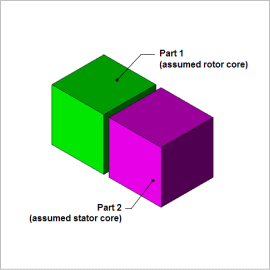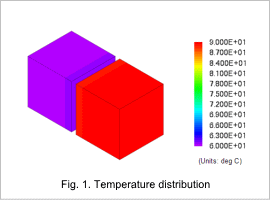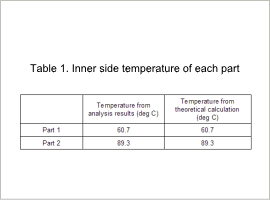*Please prepare a license ID and password for the license administrator.
*It is different from the service for JMAG WEB MEMBER (free membership). Please be careful.
Overview

With improvements in the miniaturization and increased output power of electric devices in recent years, demands for ways of dealing with heat are also increasing. It is of course important to reduce loss in order to prevent heat, but it is also important to find ways to expel any heat that is generated. The actual heat conduction and heat transfer phenomena in each part need to be accurately modeled in order to precisely evaluate an electric device’s heat dissipation characteristics. In other words, if the thermal behavior of each part is accurately modeled, it becomes possible to grasp the thermal characteristics of the entire electric device.
Here, to make thermal analysis easier to understand, two basic cube-shaped objects are modeled as stand-ins for a rotating machine’s rotor core and stator core, and a thermal conductivity analysis is carried out between them.
In this Application Note, the analysis accuracy is investigated by comparing the temperatures obtained through analysis in each part with theoretical values.
Here, to make thermal analysis easier to understand, two basic cube-shaped objects are modeled as stand-ins for a rotating machine’s rotor core and stator core, and a thermal conductivity analysis is carried out between them.
In this Application Note, the analysis accuracy is investigated by comparing the temperatures obtained through analysis in each part with theoretical values.
Temperature Distribution

The temperature distribution of part 1 and part 2 is shown in fig. 1. The temperature changes linearly from the outer to the inner side of each part.
Inner side temperature of each part

Analysis results and theoretical calculations for the inner side temperatures of part 1 and part 2 are shown in table 1. The analysis results are consistent with the theoretical calculations for both parts. This indicates that these analysis results are accurate.


